
d&b KSL Loudspeaker System
In a secret September Stuttgart meet up, d&b showcased the successor to J. AV Asia Pacific was there for the big reveal.
Text:/ Mark Davie
Over a tall glass of weissbier in Stuttgart, d&b’s Head of R&D Acoustics (née prophet), Mathias Christener, tells me he saw this day coming a good 12 years ago. Not that he’d be downing a few frothies with some Aussie in a hotel bar, but that way back in 2006 — just after he, and his team, delivered the J series line array — he could already see exactly where they needed to go next.
J series was, of course, a massive success for d&b. Engineers loved how it sounded, but crucially, it made investment sense. It was light — about half the weight of V-DOSC — and its passive crossover network only required a single amp channel to operate.
All great stuff, but Matthias’ mind was already looking over the horizon at the defining feature of d&b’s next large format line array — immaculate directivity. He could envision a future where pattern control didn’t have to be limited to the mid range and top end of the frequency spectrum. That it could extend down to the last two octaves of human hearing.
Having an idea is one thing, achieving it was going to take time and laying a number of stepping stones along the way. The first step wasn’t hardware at all, it was software. R1 and ArrayCalc arrived around the same time as J. As well as being a one-stop shop for designing, simulating and fine-tuning a system, it provided d&b with an expandable environment to grow its DSP control.
In 2013, d&b added matching hardware. The D80 amplifier had enough DSP power to make external processing redundant and paved the way for enhanced software features. The Power Factor Correction, which decouples the amplifier’s output capability from any voltage variations also increased audio quality and stability. Crucially, putting the focus on output voltage (a measurement that marries better with the unpredictable nature of music than continuous output power) opened up the door to higher-efficiency speaker designs, enhancing the ability to shape system directivity even further.
In 2014, the standardisation of OCA as AES70, foreshadowed the debut of ArrayProcessing the following year; a huge leap forward in line array control. It basically turned d&b PAs into the best possible versions of themselves through infinitesimal filter optimisation. It meant increased linearity over distance, and greater control over dispersion patterns and level in the target area.
In 2016, NoizCalc added to d&b’s elaborate computation arsenal, allowing system techs to plot noise emissions and adhere to local standards anywhere in the world. A byproduct simulation, but one informed by ArrayCalc and ArrayProcessing with its success being heavily dependent on the ability to control dispersion.
SETTING A NEW ISOBAR
All of these layers set the stage. The software begat the amplifier and DSP, which begat the fine control of ArrayProcessing and NoizCalc. But the promise of these higher-efficiency, more controlled speaker designs — the ones Matthias conceived way back when — hadn’t yet been fulfilled. The time had come for new speakers. Boxes that would natively deliver immaculate directivity.
Full-bandwidth directivity has a number of instant benefits. The obvious one is that sound stays out of the places you don’t want it. Indoors, this means quieter stages behind the PA, and there’s less off-axis sound to excite the reverberant field — excitation that translates into low-end rumble and increased reverb times indoors. Bad news. Outdoors, all that sub-400Hz directionless spill is like a PTSD trigger for noise meters. With noise pollution standards only getting more stringent, it’s a problem big gigs can’t afford to have anymore.
Full-range directivity also translates into a better experience in the desired coverage area. You get a wider ‘usable’ coverage; it retains clarity and frequency balance at lower levels; and horizontal arraying is far easier when you don’t have to worry about low-mid, off-axis creep.
When the new SL series debuted with the flagship GSL8 and GSL12 speakers, their defining feature was immaculate directivity. Isobar plots of line arrays, even J, usually show a concentration of energy that starts to relax and bloom outwards below 3-400Hz. Not so with GSL. The red hot areas stay tight like a laser all the way down to 45Hz. It beggars belief, until you walk behind an array of GSL going full tilt and experience the dearth of noise back there. GSL also arrived with a companion, the natively cardioid SL-Sub, which altogether killed off the notion of directionless sound in a concert rig for d&b.
In a similar way to J, GSL also managed to do more for less. While GSL is up against boxes like L-Acoustics K1, it shaves off 25kg per box and is a tad smaller in every dimension. Also, while K1 is a three-way, quad-amplified box; the GSL is a three-way, dual-amplified box courtesy of d&b’s adherence to passive crossovers.
(above) KSL’s first Australian outing: 8th Day Sound air freighted a rig from its US base just in time for the Australia Day celebration concert in the Sydney Opera House forecourt.
SMALLER SIBLING
But GSL wasn’t the final step in Matthias’ vision. It also wasn’t the reason I was over in Stuttgart for a sneak peak of a new mystery PA. The flagship GSL is a marvel, and necessary for festivals and stadiums. However, in the world of touring, bigger isn’t always better. For the majority of gigs, a box that’s lighter and more compact, without sacrificing on sound, is ideal.
It’s why J was a huge success for d&b. They needed another speaker to fill the gap it would eventually leave. One that had the same immaculate directivity as GSL, would fall within the weight limit of the J series (60kg), have plenty of headroom (especially down low), use the same D80 amplifier, and work seamlessly as a fill and delay system for GSL.
When we arrived in Stuttgart, there were hundreds of customers from around the globe and four members of the international press. The first day was straight down to business. Stuttgart is the automotive capital of Europe, home to the Daimler group (Mercedes, Chrysler) and the birth of the modern automobile. It’s also Porsche’s home turf.
d&b had parked us right in the middle of it all. Passing both Mercedes Stadium and Porsche Arena as we walked down the road to Hanns-Martin-Schleyer-Halle, the 15,500 pax arena where the mystery PA was ready to fire.
Schleyer-Halle isn’t a perfect venue, and there’s nothing special about the tiered seating or the makeup of the walls, but it is the place where every d&b line array is rigorously tested during the development phase. If a d&b PA sounds bad in Schleyer-Halle, then something’s gone horribly wrong.
K, HERE ’TIS
We’re soon introduced to the star of this particular show, KSL. It’s a big deal for d&b. This is the missing piece in the SL series; the speaker designed to replace the J.
Apparently the K stands for ‘Kleine’, which translates as ‘smaller’ in German. Product manager, Werner ‘Vier’ Bayer, explained KSL is designed to be the technically equivalent, smaller brother of GSL.
If you’re thinking in box sizes. The width and height of a J top box sits in between the bigger GSL and smaller KSL. A hang of 12 GSL is slightly longer than 14 KSL, and KSL is also lighter than J.
While GSL has done and will do well, d&b would expect to sell loads more KSL, so it’s important the little brother doesn’t become a side show to GSL’s impressive feature set.
From the outside, KSL really does look like a smaller GSL. It has the same grilles for the side-firing drivers, the same forked handles on the rear, and the same core driver layout. Two front-firing LF drivers, the two side-firing LF drivers, and a centrally-placed MF driver attached to a split wave-guide that skirts round the edges of the similarly centrally-placed array of HF compression drivers.
Naturally, every component is just a little smaller than its GSL equivalent. The LF drivers are 10-inch on the front, and eight-inch on the sides (14 and 10-inches on GSL), the MF driver is eight inches, and the two compression drivers have three-inch voice coils.
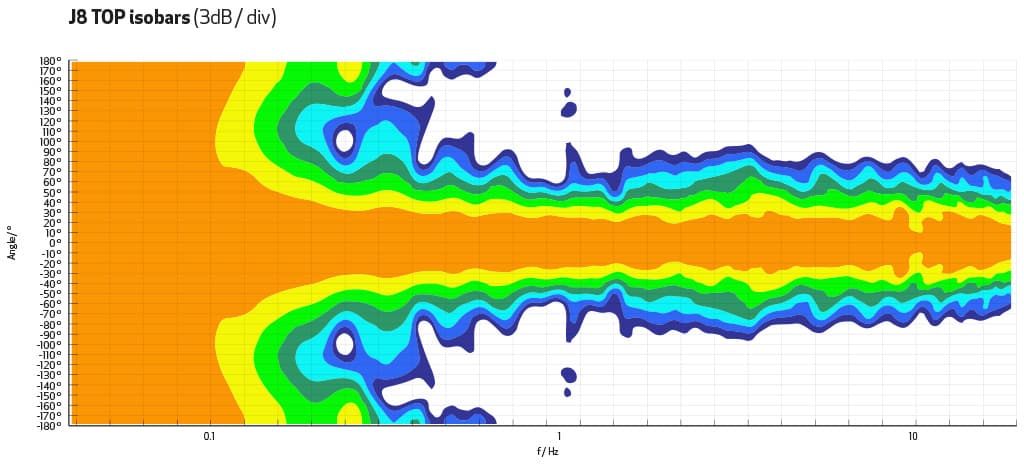

DIRECT YOU TO THE SCREEN
Here we compare the horizontal directivity of the J8 and KSL8. The bulk of the energy (orange and yellow) across the frequency range should ideally be located within the 80° horizontal spread (40° each side). As you can see, things get a little loose below 300Hz with the J8, and completely omnidirectional below 125Hz. The KSL holds its line right up to that point, with a slow easing of directivity all the way down to 50Hz.
IMMACULATE DIRECTIVITY EXPLAINED
So, how did d&b achieve this miraculous immaculate directivity? Well, with directivity already sorted above 400Hz, the main point of attack was obviously down low. Using side-firing woofers to achieve directivity is not entirely new. In principle, by spacing the woofers a quarter of a wavelength apart you get a 90-degree phase shift, creating summation in the front and cancellation in the rear. Sounds easy. And it is, for a single frequency sine wave. But music, over two octaves from 50-200Hz? Not so much.
Having successfully relied on passive crossover networks with J, d&b played the same tune with its core drivers again. The side-firing LF drivers, MF driver and HF compression drivers are all passively crossed over and driven by a single amp channel. The front-firing LF woofers get their own channel. d&b then packaged the side-firing woofers into separate bass reflex chambers to the front-firing ones. It meant the bass reflex systems could be tuned differently. With GSL/KSL, the higher octave is emitted by the speaker cones, and the lower octave by the ports. Then d&b was able to apply frequency dependent delay with all-pass filtering to make them sum and cancel across multiple octaves.
Common sense dictates the extra directivity should result in a reduction of output power, especially headroom in the low end. It’s the common knock on cardioid subwoofers. As it happens, d&b found that wasn’t the case with the side-firing woofer configuration. Instead, if you do it right, you can achieve full coherency with the front-firing woofers. It’s as if the baffle size and cone area of the front bass reflex has been virtually increased, netting a 9dB bump in headroom.
Another issue with arrays is the drop in high frequency information over longer distances. While 125Hz will easily carry over 120m when unprocessed, information at 8kHz drops dramatically over distance. Unfortunately, that 9dB bump in low frequency headroom can’t be distributed to higher up in the frequency range. The only answer is to add more components up top.
Again, it sounds relatively simple, but with space at a premium — and most of it taken up by LF woofers and bass reflex chambers — there’s not much wriggle room. Also, with directivity the main concern, all the drivers have to be symmetrically placed for the system to function properly.
Adding two HF compression drivers with large three-inch voice coils left no room to squeeze the mid driver into the central axis. Instead, d&b borrowed the split exit horn from the V series point source speakers, which was a dry run for this design in SL. It allowed d&b to stick a whopping eight-inch mid driver on a dual-channel waveguide that wrapped around both sides of the HF drivers. The bipolar radiation also helps achieve a narrower, more controlled dispersion.
By placing the MF driver further back into the box, it nearly lines up perfectly with the side-firing woofers, setting a common time alignment baseline. There’s also a frequency band gap between the low frequency range of the side-firing woofers and the midrange driver. So even though they’re connected to the same amplifier channel, it means the processing can target each more accurately and focus in on their task; one to enhance directivity, the other to produce mid range.
PRACTISE MAKES PERFECT
All this would mean nothing if the KSL didn’t have the same amazing full-range directivity as GSL. But, gasp… it does. The isobars are impressive enough [see sidebar], with laser-like focus down to 50Hz, but in action, the rear rejection is equally as impressive as GSL. Sound from the FOH PA leaking onstage is officially a vestige of the past.
It also plays its part perfectly when hung as sidefill next to a GSL main array. Walking from side to side, and around the corner of the two arrays, it was impossible to distinguish where one overlapped the other. You can sometimes sense a tonal shift or low-end blurring where the two overlap, or a different voicing of the smaller model sidefill. You could stand directly in the gap between the two, and in full-range mode, from top to bottom the frequency spectrum and voicing remained completely intact when transitioning from GSL to KSL. Showcasing mains-to-sidefill continuity is not a common test at PA demonstrations, manifesting d&b’s trust in the SL series’ directivity.
KSL TO STAY
Throughout the day, there was plenty of time to experience the KSL in different configurations, including ground-stacked beside a cart of J series. While the incumbent sounded great, and familiar. There was an undeniable increase in clarity at all levels with the KSL, with a noticeable lack of power compression. Snares cracked harder, and kicks were delivered more consistently.
In some ways it was sad to see J like that. It’s been such a solid performer for so many years. However, there is such a difference out front, and an incredible shift behind with KSL, that there’s no doubt… immaculate directivity will soon be everywhere. Well, it’ll be exactly where you want it.



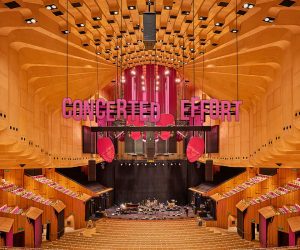

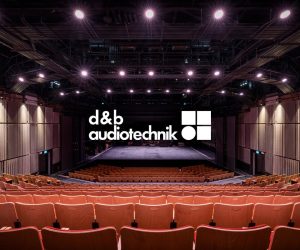
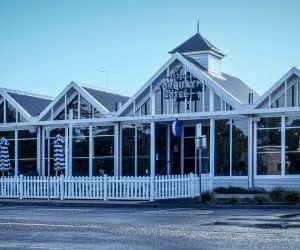
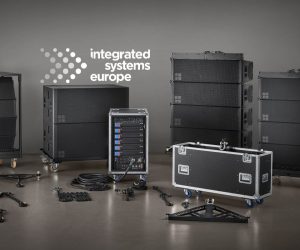

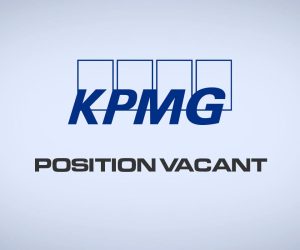

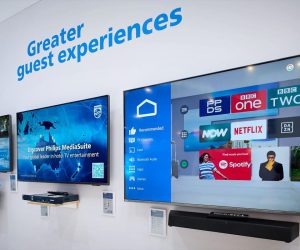



RESPONSES